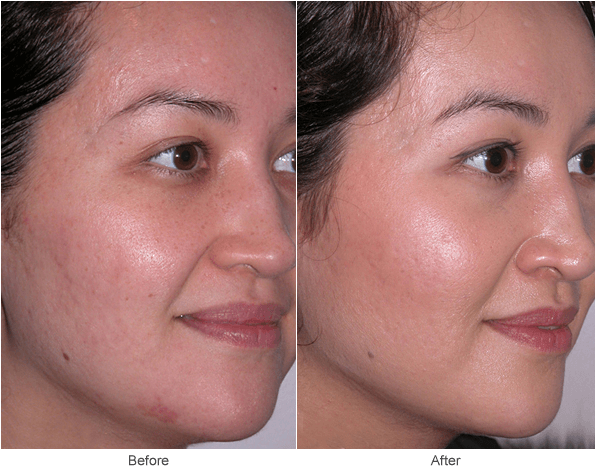Effective Acne and Acne Scars Treatment: Clear Skin Solutions That Work
Checking Out Skin Problem: Treating and recognizing Acne Scars for Healthier Skin
Acne scars represent a significant concern for individuals looking for to keep healthy skin, as they can affect both appearance and self-esteem. Understanding the different kinds of scars, from atrophic to hypertrophic, is essential for determining ideal treatment choices.
Comprehending Acne Scars
Comprehending acne scars is critical for any person that has actually experienced extreme acne, as these marks can have a long lasting effect on both physical appearance and psychological well-being. When the skin undertakes inflammatory responses during active acne sores, acne scars develop. The extent of scarring is usually influenced by elements such as the kind of acne, its period, and private skin qualities.
The body's all-natural recovery process can lead to either atrophic scars, which look like depressions in the skin, or hypertrophic scars, which are increased and result from overflow of collagen. Furthermore, the emotional toll of acne marks need to not be undervalued; several people report feelings of embarrassment, anxiety, and lowered self-worth. This psychological concern can influence social communications and total top quality of life.
Attending to acne marks requires a comprehensive understanding of their formation and effect. Understanding of the capacity for lasting repercussions related to unattended scars can inspire individuals to seek ideal therapies. Early treatment and effective monitoring approaches can significantly enhance skin appearance and boost mental strength, emphasizing the significance of understanding the intricacies surrounding acne scars.
Kinds of Acne Marks
Acne scars can be classified right into distinct kinds, each exhibiting one-of-a-kind characteristics and calling for certain treatment strategies. The main kinds of acne scars include atrophic, hypertrophic, and keloid marks.

Hypertrophic scars, on the other hand, are elevated over the skin level and are the result of extreme collagen manufacturing during the healing process. They typically stay within the limits of the initial acne lesion. Keloid scars are similar however prolong past the initial injury website, creating bigger, raised areas that can be painful or itchy.
Understanding these types of scars is vital for picking ideal therapy alternatives. Various marks might react far better to details treatments, such as laser therapies, fillers, or medical interventions, highlighting the value of a customized technique to acne scar administration.
Determining Your Marks
When assessing the appearance of your skin, it is important to precisely determine the sort of marks existing, as this will educate one of the most reliable therapy method. Acne scars generally come under 2 groups: hypertrophic and atrophic marks. Atrophic scars, which are the most usual, appear as depressions or indentations on the skin. These can better be categorized into ice-pick scars, boxcar marks, and rolling marks, each showing distinctive features and requiring various techniques for analysis.
Hypertrophic scars, on the other hand, are increased and occur as a result of extreme collagen manufacturing during the recovery process. Identifying the specific attributes of your scars-- such as structure, deepness, and width-- is crucial for appropriate recognition. Additionally, think about the circulation of scars throughout your skin, as this can indicate the intensity and period of the acne condition.
Involving with a dermatologist can give useful understandings into the nature of your marks, assisting in the differentiation in between different types. A detailed understanding of your scars will eventually cause an extra tailored and efficient treatment strategy, making certain a clearer and healthier complexion.
Treatment Choices Readily Available
Recognizing the specific sort of acne scars present on your skin lays the foundation for discovering reliable treatment options. Common sorts of acne scars include atrophic (depressed), hypertrophic (increased), and post-inflammatory erythema.
For atrophic marks, alternatives such as chemical peels, microneedling, and laser resurfacing are extensively used. Chemical peels try this site utilize acids to remove the outer layer of skin, advertising brand-new cell development. Microneedling includes tiny needles that create micro-injuries, promoting collagen manufacturing. Laser resurfacing targets damaged skin cells, boosting texture and tone.
Hypertrophic scars can be treated with corticosteroid shots to squash the scar or laser therapy to lower redness and boost appearance. acne scars treatment. Silicone gel sheets and stress dressings might likewise assist in managing raised marks
In enhancement, dermal fillers can temporarily fill out depressions from atrophic marks, while surgical excision may be check my source suitable for severe instances. Each treatment alternative has its benefits and considerations, making it important to consult with a skin specialist. They can give personalized suggestions based on the kind and seriousness of your scars, along with your skin kind and overall health and wellness.
Tips for Prevention
Efficient prevention methods can considerably minimize the chance of creating acne scars. The very first step is to keep a constant skin care regimen that consists of mild cleansing, exfoliation, and hydrating. Utilizing non-comedogenic items helps protect against blocked pores, which can exacerbate acne. Furthermore, incorporating topical treatments containing salicylic acid or benzoyl peroxide can properly lessen and manage breakouts swelling.
Avoiding need to pick or pop acne sores is essential, as this can cause much deeper skin damage and enhance the danger of scarring. Rather, take into consideration using a cold compress or over the counter therapies to lower swelling and redness.
Sun protection is one more crucial facet of avoidance; ultraviolet (UV) rays can dim marks and prevent the healing process. Applying a broad-spectrum sunscreen with a minimum of SPF 30 daily can safeguard the skin and promote even recovery.
Finally, maintaining a well balanced diet abundant in minerals, anti-oxidants, and vitamins supports skin wellness and healing. Staying moisturized and managing anxiety levels can likewise next play a substantial role in minimizing acne flare-ups. By implementing these methods, individuals can substantially decrease their possibilities of creating acne scars.

Conclusion
In verdict, understanding and recognizing acne marks is important for efficient treatment and accomplishing much healthier skin. Different kinds of acne scars, consisting of hypertrophic and atrophic marks, require certain treatments tailored to private requirements. Therapy choices variety from chemical peels and microneedling to corticosteroid injections, highlighting the significance of getting in touch with a skin doctor. In addition, taking on a mild skin care routine and safeguarding the skin from UV exposure can significantly add to the avoidance of more scarring and total skin wellness.
The body's natural recovery procedure can result in either atrophic scars, which show up as anxieties in the skin, or hypertrophic scars, which are elevated and result from overproduction of collagen. They are further separated into 3 subtypes: ice pick marks, boxcar marks, and rolling scars. Acne marks typically drop into 2 classifications: atrophic and hypertrophic marks. These can even more be identified into ice-pick marks, boxcar scars, and rolling marks, each displaying distinctive attributes and requiring various approaches for analysis.
Various kinds of acne marks, including hypertrophic and atrophic marks, require details interventions customized to individual requirements.